ON INTERNATIONAL ANTI-CORRUPTION DAY, FIGHTING ECONOMIC EVIL
With new standards in the works, ISO joins the fight. [CONSUMERS, MANAGEMENT SYSTEMS, BUSINESS & ANTI-BRIBERY] Corruption threatens national security, economic growth, human rights, jobs,
ISO 45001:2018 is an international standard for OCCUPATIONAL HEALTH AND SECURITY MANAGEMENT
Whether you’re an employee, a manager, or a business owner, you all have the same aim in mind: no one getting hurt on the job. Improved productivity is the result of ensuring that employees work in environments that are transparent and trustworthy throughout their business and supply chain. Furthermore, brands and reputations are becoming increasingly dependent on ethical behaviors.
The new ISO standard for workplace health and safety is ISO 45001:2018. (Occupational Health & Security). It has quickly become one of the most widely anticipated standards in the world, with the potential to significantly improve workplace safety.
ISO 45001 is a milestone! ISO 45001:2018, Occupational health and safety management systems – Requirements with recommendations for use, is the world’s first International Standard dealing with workplace health and safety. It provides a single, unambiguous framework for all companies desiring to enhance their OH&S performance. It is directed at an organization’s top management and attempts to provide a safe and healthy work environment. To do so, it’s critical to keep track of all elements that could lead to illness, injury, or, in the worst-case scenario, death, by minimizing negative effects on a person’s physical, emotional, and cognitive health — and ISO 45001:2018 covers all of those components.
It gives useful, useable guidelines for enhancing worker safety in countries all over the world to government agencies, industry, and other concerned stakeholders. It may be deployed to both captive and partner factories and production facilities, regardless of their location, thanks to an easy-to-use framework.
OHSAS 18001, the previous global standard for occupational health and safety, will be replaced with ISO 45001:2018. Organizations that have already been certified to OHSAS 18001 will have three years to comply with the new ISO 45001:2018 standards, while certification is not required under the standard.
The ability to prevent occupational diseases and injuries is the most obvious benefit of ISO 45001:2018. The ISO 45001:2018 standard equips your company with the resources it needs to save lives and avoid injuries.
The new IS0 45001:2018 standard requires a commitment to safety from the top down. ISO 45001:2018 holds C-suite executives accountable for employee well-being by incorporating safety and health into an organization’s management structure.
By lowering the danger of harm, you’re also lowering the likelihood of a worker having to make a claim. As a result, firms who successfully adopt an ISO 45001:2018 management system may see fewer out-of-pocket expenses and premiums, including worker’s compensation.
Following the ISO 45001:2018 standard demonstrates to consumers, investors, and regulators that you care about people’s safety. Stakeholders are more likely to want to do business with you if they have faith in your ability to maintain a safe work environment. Not only that, but they’re less prone to question your every move.
Employee participation is an important component of any successful safety programme. The ISO 45001:2018 standard provides a method for promoting worker consultation and engagement in an organized manner.
Organizations can use ISO 45001:2018 as a framework to detect potential safety concerns before they cause an accident. The company will have fewer unpleasant surprises if hazards are addressed in the operations.
ISO 45001:2018, isn’t just about risk, employers can reveal possibilities to improve safety and productivity by detecting possible dangers.
The safety regulations and practice differ from one industry to the next and from one jobsite to the next. One of the advantages of ISO 45001:2018 is that it may be implemented in almost any organization. The following are some of the industries that might benefit the most from a uniform safety management system:
Workers in the oil and gas extraction business have a fatality rate that is up to seven times greater than workers in general industry. ISO 45001:2018 assists by establishing a consistent language and set of safety requirements that are easily understood by all employees. This results in higher levels of participation and accountability, as well as a safer workplace.
Construction workers are exposed to a variety of dangers, ranging from slip-and-fall accidents to long-term health issues linked to asbestos exposure, repetitive stress injuries, and more. ISO 45001:2018 provides a streamlined framework that integrates into your workflows, making safety a way of life rather than a box to be checked.
For pharma workers, toxic chemical exposure, fire and explosive dangers, and slip-and-fall injuries are all significant health and safety concerns. ISO 45001:2018 interfaces with other quality management systems, decreasing the amount of paperwork required to be compliant and manage risk across the enterprise.
Food and beverage processing, utilities and telecommunications services, automobile manufacturing, and other businesses might benefit from ISO 45001 certification to guarantee occupational health.
Certification is relatively simple once you have an ISO 45001:2018 management system in place. Because the International Standards Organization (ISO) does not provide certification, you must seek certification from a recognized third-party. The following are the essential stages to becoming ISO 45001:2018 certified:
With the advent of ISO 45001:2018, the worldwide industry has seen a substantial shift in how health and safety management and other concerns associated to it are seen. Occupational hazard and safety is no longer a stand-alone concern for the company; it has become an intrinsic aspect of the entire operational procedure to ensure the company’s long-term viability.

With new standards in the works, ISO joins the fight. [CONSUMERS, MANAGEMENT SYSTEMS, BUSINESS & ANTI-BRIBERY] Corruption threatens national security, economic growth, human rights, jobs,

ISO standards are offering much-needed solutions as cloud computing revolutionizes the way we socialize and work. [ECONOMY, INNOVATION, COVID-19 & HEALTH] The cloud serves as

New eye-protection guidelines have just been released. [MEDICAL, SAFETY & SPORT] Our eyes are our window to the world and one of our most developed

Organizations must have procedures in place to guarantee they stay up with the regulatory landscape, which is always evolving. Compliance with laws and regulations, on

Regulatory burdens are reduced while product safety and performance are improved. [MEDICAL & BUSINESS] Medical gadgets, ranging from bandages to MRI machines, contribute to save

ISO IS AT THE CENTRE OF A WORLDWIDE EFFORT TO REHABILITATE OUR PLANET. ISO 14000 FAMILY This year’s World Environment Day theme is “Reviving and

ALL INTERNATIONAL STANDARD ACCREDIATION FORUM
